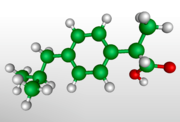Porter EA, Janssen PA, Grange CS, Douglas MJ. Ibuprofen versus acetaminophen with codeine for the relief of perineal pain after childbirth: a randomized controlled trial. CMAJ 2001; 165:1203-9.
* BACKGROUND Pain that occurs from perineal laceration or episiotomy during childbirth can be severe and is often undertreated. This randomized double-blind controlled trial was designed to compare the effectiveness and side effects related to 2 common analgesics used in this setting: ibuprofen and acetaminophen with codeine.
* POPULATION STUDIED The study looked at 237 women who delivered vaginally and who had either a third- or fourth-degree perineal laceration or an episiotomy. The trial took place between August 1995 and November 1996 at a tertiary-care teaching and referral center for obstetric care in Vancouver, BC, Canada. Approximately 35% of the women enrolled spoke Cantonese or Mandarin; these women were supplied with consent forms in Chinese script translated by a bilingual nurse. Women were excluded for allergy to either of the study drugs, history of drug dependence, regular use of analgesic drugs, or any medical condition known to be potentially exacerbated by opioids or nonsteroidal anti-inflammatory drugs. Women were also excluded if any major postpartum complication, including postpartum hemorrhage, had occurred. The 2 groups of women did not differ significantly in sociodemographic characteristics or in gravidity and parity. All but 4 of the 237 women enrolled completed the study. The 2 treatment groups did not differ significantly except that the ibuprofen group contained more women who had had forceps delivery.
* STUDY DESIGN AND VALIDITY This study was a randomized, double-blind trial with no placebo control. Randomization was done in blocks of 20 and stratified on the use of forceps, which were postulated to contribute significantly to postpartum pain. Women were randomized within 1 hour after delivery to receive either 400 mg ibuprofen or 600 mg acetaminophen with 60 mg codeine and 30 mg caffeine every 4 hours for 24 hours after birth. The pharmacy allocated the patients to the treatment groups. Women and their nurses were blinded. Women who did not request analgesia were not enrolled.
* OUTCOMES MEASURED The primary outcome measured was severity of pain rated on a 10-cm visual analog scale. Other outcomes evaluated were the number of doses of medication, dosing intervals, treatment failures, side effects, overall level of satisfaction, cost of treatment, and nursing time required for medication administration.
* RESULTS Both groups had similar pain ratings before taking the first dose of analgesic (rating of 3.4 for ibuprofen vs 3.3 for acetaminophen plus codeine plus caffeine) as well as number of medication doses in 24 hours (3.4 vs 3.3) and treatment failures (13.8% vs 16%). Among treatment failures, 78% occurred in women who had had forceps delivery. Subjects receiving ibuprofen experienced fewer side effects (52.4% vs 71.7%, P = .006, number needed to harm = 5.2). Overall satisfaction between the groups did not differ. Ibuprofen ($0.02/table) was less expensive than acetaminophen with codeine ($0.05/tablet). Because of the need for additional inventory control, the administration of each dose of the codeine combination took an average of 10 minutes, more time than the administration of ibuprofen.
RECOMMENDATIONS FOR CLINICAL PRACTICE
Ibuprofen and acetaminophen with codeine were similarly effective for the management of postpartum perineal pain caused by significant maternal trauma. Women with forceps-assisted deliveries had significantly more pain and were more likely to fail treatment with either medication. Patients receiving acetaminophen with codeine experienced more side effects, most notably nausea, stomach pain, and disorientation. Ibuprofen should be used as a standard first-line medication for the treatment of perineal pain in this setting. It is less expensive, can be self-administered by patients from the bedside, and has fewer side effects while maintaining the same effectiveness for analgesia. Acetaminophen with codeine should be reserved for women who do not tolerate ibuprofen.
COPYRIGHT 2002 Appleton & Lange
COPYRIGHT 2002 Gale Group



